How to Build a Bat House
This simple one-chamber roost will give those beneficial bug-eaters a much-needed boost. Here’s how to build a simple bat house.
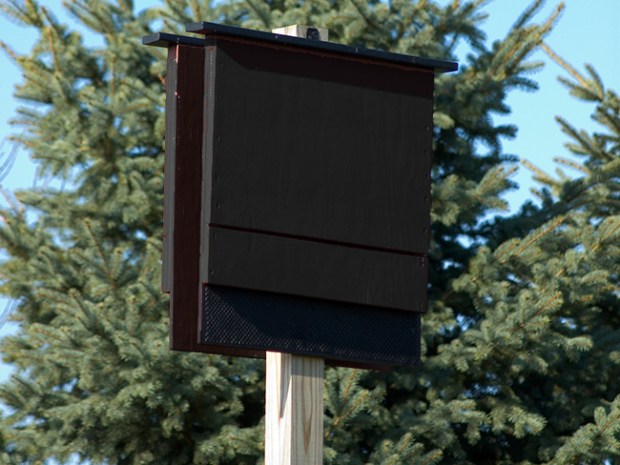
WHAT YOU’LL NEED TO BUILD A BAT HOUSE
- 1⁄2″ x 30″ x 36″ sheet of exterior plywood (Don’t use pressure-treated plywood; it’s toxic to bats)
- 1⁄2” x 26″ x 36″ sheet of exterior plywood
- 1″ x 4″ x 40″ board for the roof
- Two 1″ x 2″ x 24 1⁄2″ boards for interior frame
- 1″ x 2″ x 36″ board for interior frame
- Four 1″ x 2″ x 3″ wood spacer blocks
- Crosscut saw
- Pocketknife
- One quart of dark exterior water-based stain
- 53 1″ exterior wood screws
- Seven 1 5⁄8″ exterior wood screws for the roof
- Drill
- 1⁄2″ drill bit for vent holes
- 3⁄32″ drill bit for screw pilot holes
- Countersink bit so screws are flush
- Phillips screwdriving bit
- Two squeeze tubes of exterior, paintable caulking
- One quart of exterior water-based primer
- Two quarts of exterior black or gray water-based paint
- Paintbrushes
WHAT YOU’LL DO TO BUILD A BAT HOUSE
Step 1: Cut out all the bat house boards.
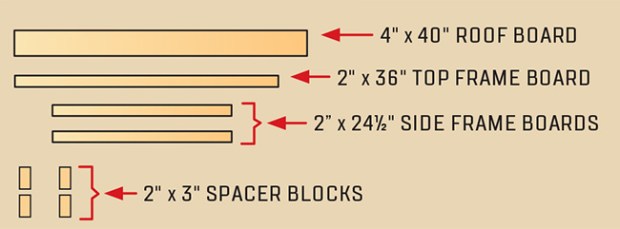
Step 2: Use your pocketknife to scribe shallow grooves (less than 1⁄16″ deep) across the inside of the back sheet of plywood, about 1⁄4″ to 1⁄2″ apart. The grooves help bats grip the plywood.
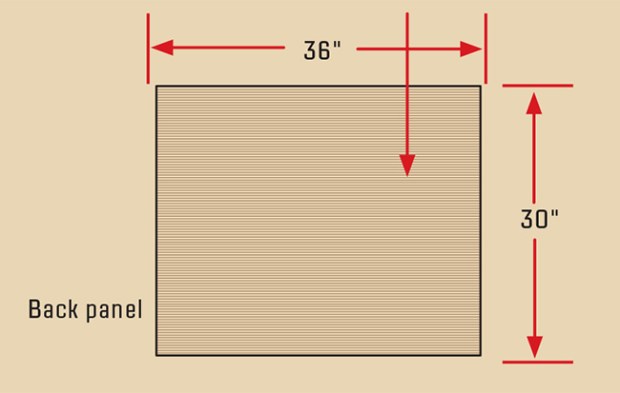
Step 3: Run a bead of caulk onto the contact surfaces of the interior frame and spacer blocks, and then screw them in place. All surfaces that are in contact with each other should be caulked before screwing them together. Caulking acts as a gasket, sealing out water.
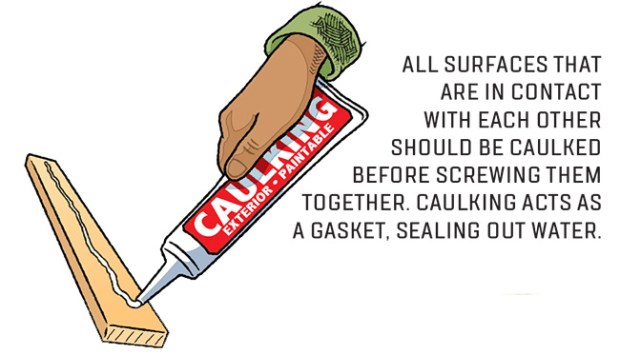
Step 4: Drill 1⁄2″ vent holes. In cold climates, you need only three or four vent holes.
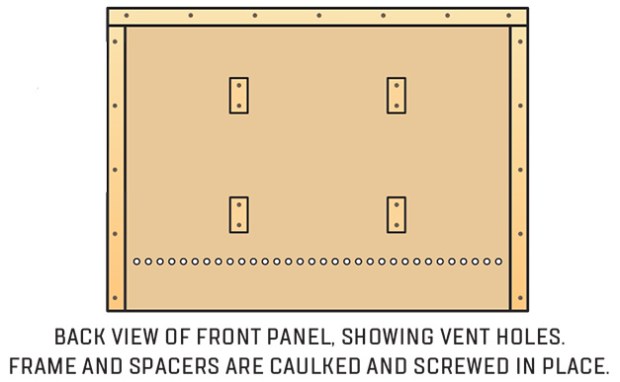
Step 5: Stain the interior of the bat house, including the plywood, frame and spacer blocks. Allow the stain to dry.
Step 6: Caulk and screw the back panel to the frame and spacer blocks. Be sure to drill pilot holes to avoid splitting.
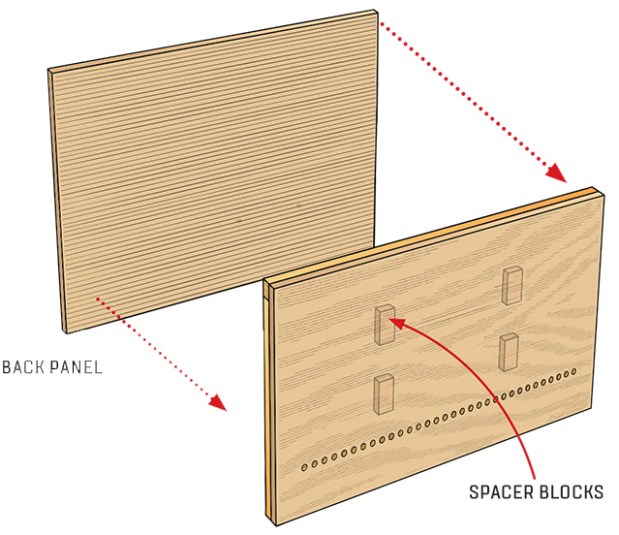
Step 7: Caulk and screw on the roof. A drop of caulking in each screw pilot hole will help waterproof the bat house and keep the inside dry.
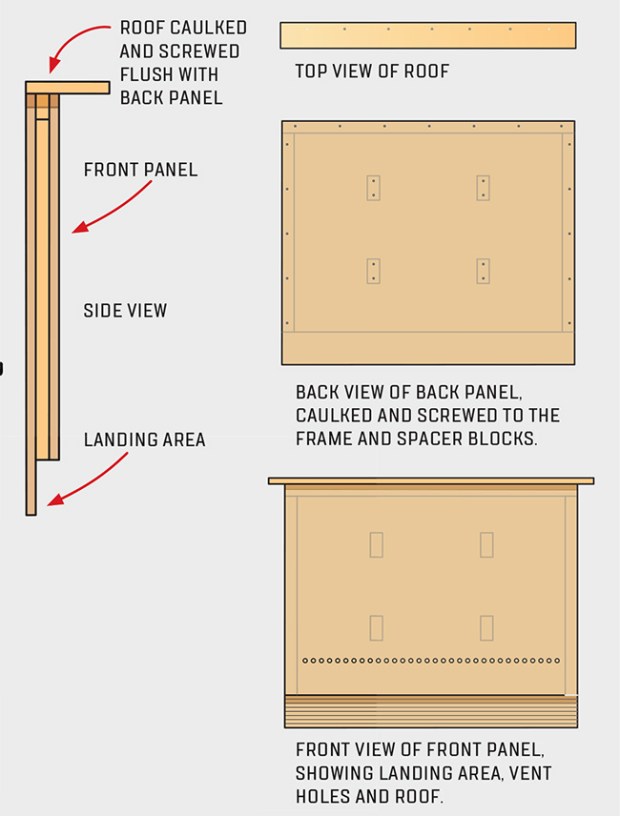
Step 8: Paint the exterior with primer, then apply two coats of paint. Use black paint for colder climates and gray paint for warmer climates. Attach the bat house to a building or other structure. Face it south or east, about 10′ to 12′ off the ground.
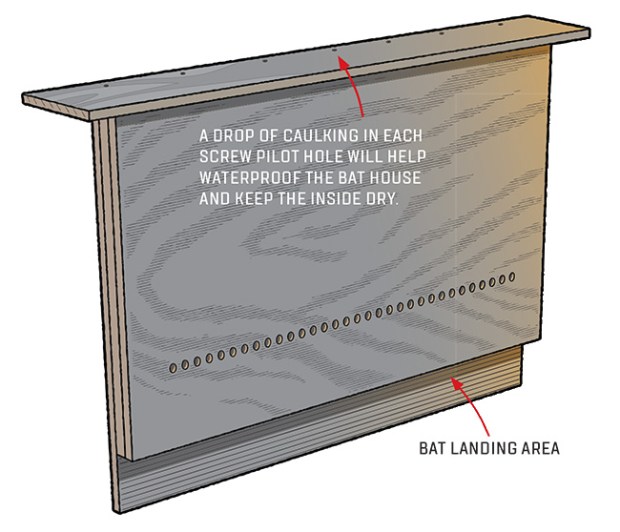
PHOTOS OF COMPLETED BAT HOUSES
Check out these photos of the completed project sent to us by Boys’ Life readers. If you have a photos of a BL Workshop project, please use the form below to send them to us.



Awesome! For my Mammal Study MB, I built a bat box for the project part.
Bat guano in and of itself is not “poisonous” and yes it is used as plant fertilizer. Don’t use it directly on plants as it will be too “hot” or too strong. Needs to be mixed with other things like a mulch to temper it a bit.
BUT – if left in piles the guano can develop a naturally occurring fungus whose spores will cause histoplasmosis in humans. It is this fungus that is dangerous.
Simple solution: if you host a bat house please clean up any droppings from underneath. You can mix those droppings into garden soil to fertilize plants in your yard. Use a mask (maybe a dust mask) to protect you lungs while cleaning it up and mixing it in. Then wash yourself and your clothes thoroughly.
Look up “histoplasmosis and bat guano” for more details.
The comments here are from 2-3 years ago but this needs to be clarified.
Dark exterior water-based stain? Per the paint dept. at my Home Depot they don’t know of a water-based stain, anyway they don’t carry it. Why can’t we use the same water-based exterior paint that we will use on the outside?
I THINK BATS ARE cute AND I WILL HAVE ONE WHEN AM 20 YEAR OLD IN MY HOUSE.
How do you attach it to the post??
bat guano is used in quite a number of different plant fertilizers, pretty sure its not poisonous 😉
Do you need to do anything to protect from bat guano (bat dung)? Is it really poisonous?
Considering this as a troop conservation project. If a scout is thrifty, shouldn’t these dimensions be adjusted so there isn’t so much waste when cutting sheets of plywood and cutting 1×4 boards?